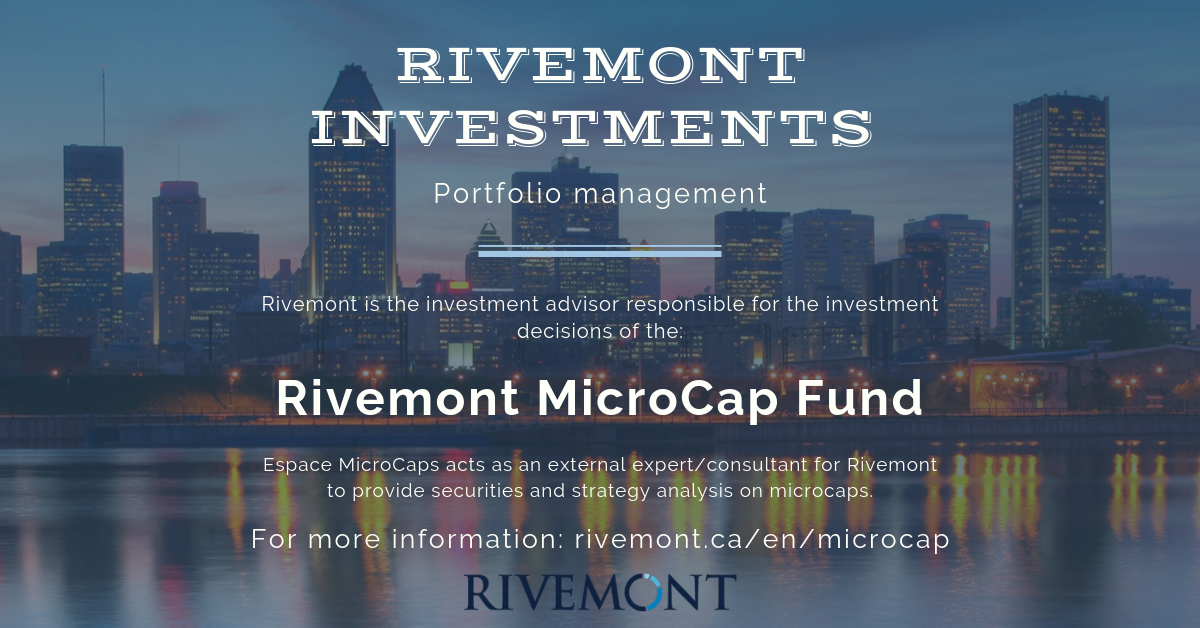Mathieu Martin |
How To Evaluate A Company In 30 Minutes

What should you do when you discover a new company that you think might be interesting? Where should you start to determine whether this is a good opportunity or not?
Nowadays, it is relatively easy to be exposed to new investment ideas on a regular basis, whether it be on social media, message boards, email, Youtube, conferences or other networking events, etc. If you are like me and your watch list is already very large (maybe even too large), you need a process to quickly determine if a company deserves your attention or not. Over time, I developed a personal routine that allows me to get a good overview of a business in 30 minutes or less in order to see if it meets enough of my investment criteria. If that’s the case, I’ll add it to my watch list and spend more time on it later, otherwise I’ll dismiss it immediately.
Is this technique perfect and does it prevent me from missing any good opportunities? Of course not. But since my time is limited and I will never get to know all North American microcap companies, I need to filter as efficiently as possible. So here’s an overview of my process:
Step #1: Financial Statements
I like to start with financial statements because it’s a quick way for me to filter out a number of companies that do not fit my criteria. You can find the financial statements (and all other official documents) of Canadian-listed companies on Sedar.com. Some of the things I typically look for:
- Does the company have revenue? Is it growing?
- Is the company profitable or about to reach profitability?
- Is the balance sheet healthy?
- How many shares are outstanding and what is the market cap?
Many times, my research ends at this stage, especially if the company has no revenue and/or burns through a lot of cash every quarter. If the balance sheet is in poor shape, for example showing a large working capital deficit or a considerable amount of debt, I may also not be very enthusiastic to keep searching.
Step #2: The Company’s Website
After I saw some potential, or at least didn’t see anything that turned me off in the financial statements, I usually go to the company’s website. My main objective is to find an investor presentation (PDF or PowerPoint document) in the investor section of the website. I would say I generally find such a document 50% to 75% of the time.
The investor presentation is typically a 20 to 30 page document that provides an overview of the business. This allows me to quickly understand what kind of products or services the company sells, what industry it’s in, what are some of the highlights that make it a good investment opportunity (according to the management team), etc. After the quantitative analysis of step #1, I now focus on the qualitative aspect during step #2.
If I didn’t manage to find an investor presentation, I will quickly browse the website to take a look at the products or services offered. I will also read the management team and board of directors bios to learn more about their experience.
Step #3: The Management Discussion & Analysis (MD&A)
The MD&A is a document that is systematically filed together with quarterly or annual financial statements, and it’s also available on Sedar.com. The MD&A essentially is a detailed review of the financial statements with commentary from the management team. It includes a description of the company and, if applicable, its various subsidiaries, an overview of the industry, the company’s growth strategy, an in-depth review of financial results as well as risk factors to consider before investing.
Several companies also include a section called “Outlook” and this is often the one that provides the best insights when it comes to filtering quickly. In this section, management shares details about the company’s future prospects and main goals for the upcoming months or years. The language used in this section often reveals positive or negative clues that help me understand whether the business is experiencing positive momentum or is going through though times.
Step #4: The Most Recent Press Releases
Again using Sedar.com, I take a look at the last 5 to 10 press releases to see what were the most important announcements in recent months. Also, if a material news item has been published recently, the company may not have had the time to include it in its investor presentation or in the MD&A. This step allows me to make sure I have a complete picture of what’s been happening and where the company is now.
Bonus Steps
If I have time left or want to know a little more immediately, I like to take a look at the following:
- Average daily trading volume on the stock: This allows me to get a feel for how much the company is known by other investors. The more volume, the more likely it’s well-known. I prefer when a stock is illiquid (doesn’t trade a lot), which means it’s likely to be under the radar and unknown by other investors. If a company is unknown, my odds of finding an undervalued and potentially attractive investment opportunity are improved.
- Insider ownership: I like when the management team and the board of directors own a significant stake in the company, which incentivizes them to act in the best interests of shareholders. The level of insider ownership can sometimes be found in the investor presentation. Otherwise, you’ll have to go to SEDI.ca and manually calculate it. Warning: SEDI is not very user-friendly and the website seems like it hasn’t been updated for decades!
- Blog posts or analyst reports: If I can get my hands on detailed analyzes of the company published by bloggers or analysts, this can make my due diligence process much easier. On the other hand, the easier my job is, the easier it is for other investors as well. When I cannot find any article about the company and there is no analyst coverage, my odds of finding a bargain increase dramatically.
Now What?
As a result of this short process, I usually have a good idea if the company appears to have potential or not. For example, I might have been impressed by revenue growth (Step #1) or a product/service that looks very promising (Step #2). I could also just be interested based on traditional value investing metrics such as a low price/book ratio. Whatever the reason, I must feel curious to dig a little further.
When a company has passed this first filter successfully, I will include it in my watch list and subscribe to Conference Call Transcripts updates to receive all the new Sedar documents that the company will publish in the future.
Subsequently, my due diligence process generally involves building a financial model and making revenue forecasts, doing a peer analysis as well as a thorough assessment of risks and potential catalysts. After a good in-depth research, I typically try to get in touch with management to ask some of the questions I didn’t find answers to during my research. I may spend dozens of hours of research before being comfortable enough to make an investment.
That being said, the four-step process explained in this article allows me to filter most new businesses in about 30 minutes and to avoid spending dozens of hours researching opportunities that are not worth it. I encourage you to develop your own process by incorporating your criteria and identifying the essential ingredients you want to find in order to make an investment.
I’d be very interested to learn more about some of your criteria, tips and tricks to quickly assess if a new opportunity suits you or not. Feel free to share it in the comments section below.
Happy research and due diligence to all!
Mathieu


